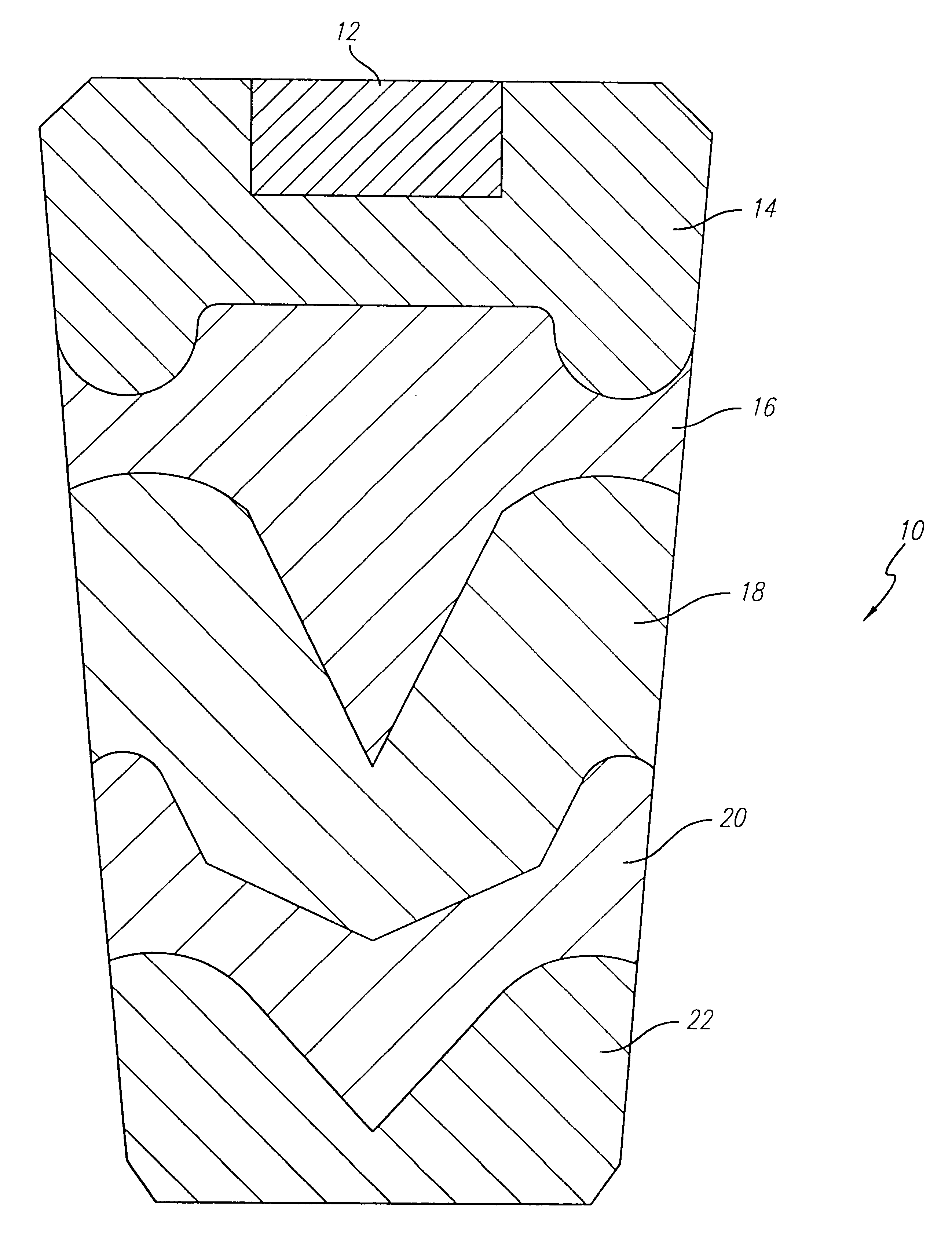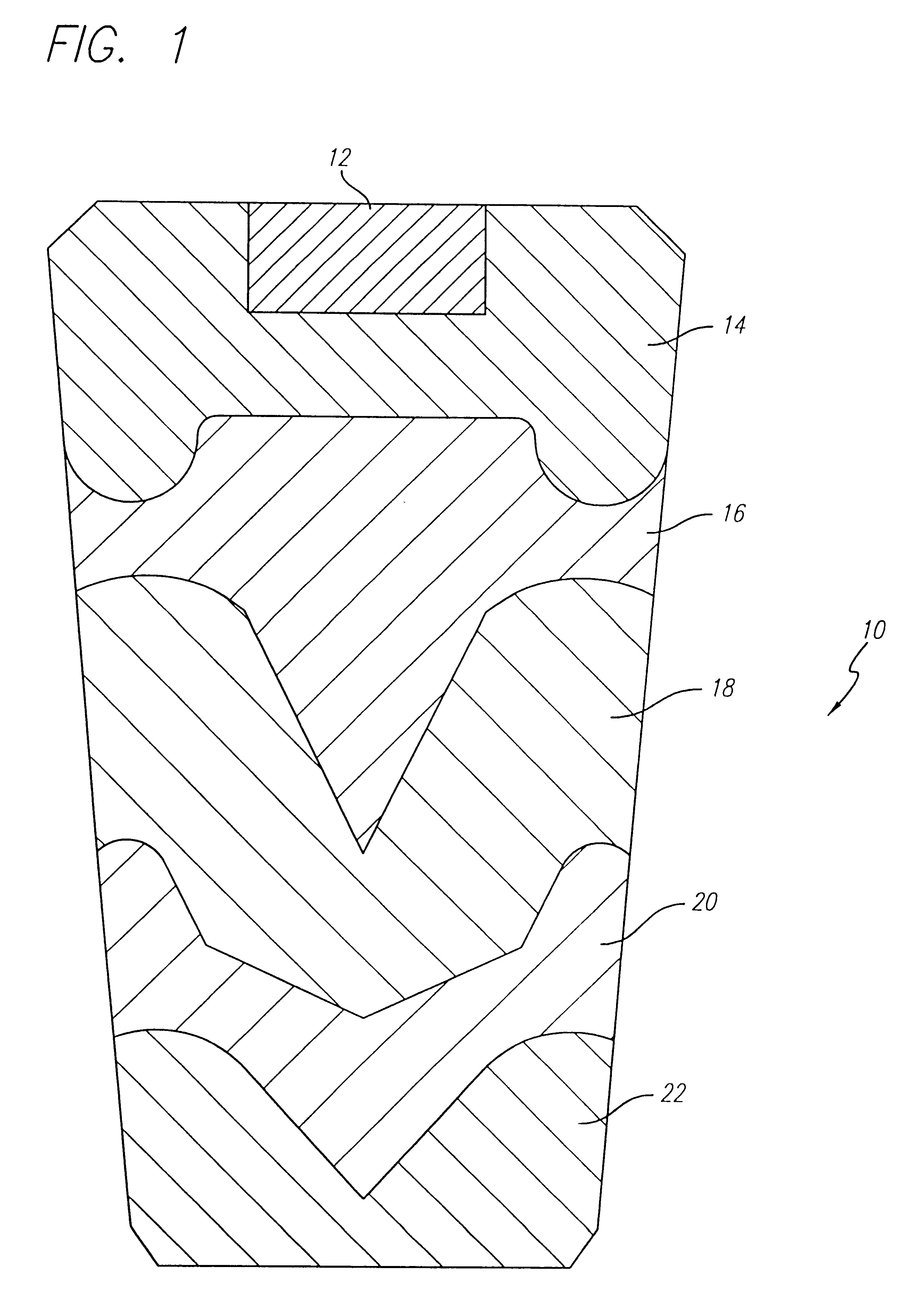Low temperature sensitivity oxygen generating compositions
- Summary
- Abstract
- Description
- Claims
- Application Information
AI Technical Summary
Problems solved by technology
Method used
Image
Examples
example 2
Layer 1: 24 grams: 11.0% tin powder, 9.0% cobalt oxide, 4.0% glass powder, and 76.0% NaClO.sub.3.
Layer 2: 63.7 grams: 6.3% tin powder, 0.7% MgO, 2.0% glass powder, 1.2% Co.sub.3 O.sub.4, and 89.8% NaClO.sub.3.
Layer 3: 127 grams: 5.5% tin powder, 5.0% Na.sub.2 SiO.sub.3, 1.1% Co.sub.3 O.sub.4, and 88.4% NaClO.sub.3.
Layer 4: 500 grams: 3.5% tin powder, 5.0% Na.sub.2 SiO.sub.3, 0.6% Co.sub.3 O.sub.4, and 90.9% NaClO.sub.3.
An oxygen generating core was formed using these mixtures according to the procedures in Example 1. When loaded into a stainless steel housing and ignited, the candle operated smoothly for 17.3 minutes and generated 230 liters of oxygen at room temperature. The shape of the oxygen generating core was retained, and the expended core had a very uniform texture with small pores.
example 3
Layer 1: 16.3 grams: 11.0% tin powder, 9.5% cobalt oxide, 3.0% glass powder, and 76.5% NaCIO.sub.3.
Layer 2: 47 grams: 8.0% tin powder, 0.7% MgO, 1.6% cobalt oxide, 2% glass powder, and 87.7% NaClO.sub.3.
Layer 3: 78.5 grams: 7.0% tin powder, 4.0% Na.sub.2 SiO.sub.3, 1.6% cobalt oxide, and 87.4% NaClO.sub.3.
Layer 4: 98 grams: 4.0% tin powder, 4.0% Na.sub.2 SiO.sub.3, 0.74% cobalt oxide, and 91.26% NaClO.sub.3.
Layers: 53.9 grams: 3.0% tin powder, 2.5% Na.sub.2 SiO.sub.3, 0.51% cobalt oxide, and 93.3% NaClO.sub.3.
An oxygen generating core was formed using these mixtures according to the procedure in Example 1. When loaded into a stainless steel housing and ignited, the candle operated for 13.0 minutes and generated 85.2 liters of oxygen.
Expended oxygen generating cores which have been formed and operated in accordance with the invention at hot, cold and room temperature environmental conditions all typically have very uniform texture with small, uniform pores, and without large pores or...
PUM
 Login to view more
Login to view more Abstract
Description
Claims
Application Information
 Login to view more
Login to view more - R&D Engineer
- R&D Manager
- IP Professional
- Industry Leading Data Capabilities
- Powerful AI technology
- Patent DNA Extraction
Browse by: Latest US Patents, China's latest patents, Technical Efficacy Thesaurus, Application Domain, Technology Topic.
© 2024 PatSnap. All rights reserved.Legal|Privacy policy|Modern Slavery Act Transparency Statement|Sitemap


